The Domuyo volcano is regarded as “Patagonia’s roof”, with its 4709 meters. Its name means “who shakes and complains” in Mapuche language. It is not easy to get to the base, but the journey is worth it.
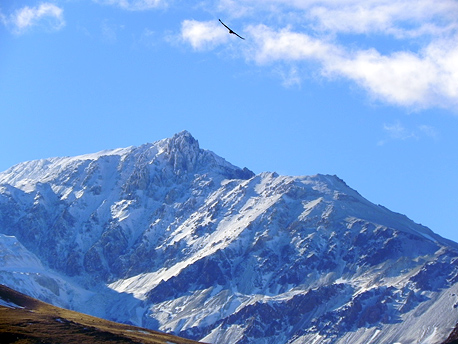
The landscape you will discover during this circuit will amaze you. Here, nature will display its aggressive and impressive side. The route borders ravines and precipices through which the typical mountain rivers flow, it reaches the top of the hills and it shows spectacular views. Finally, it will leave you surrounded by hot water streams and boiling geysers that emerge from the rocks and that reach 2 meters of height.
From Andacollo until Villa Aguas Calientes there are 94 kilometers of unpaved road, you can travel them by car but depending on the special conditions of the time of the year, it may be advisable to go by van or by 4×4 vehicles.
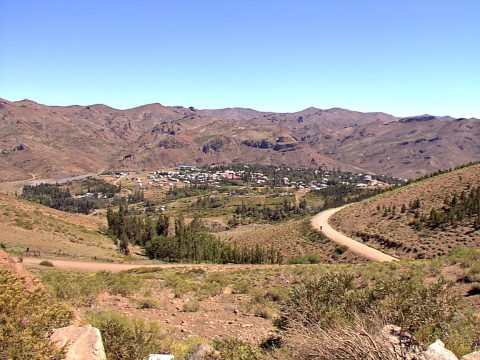
Route no. 43 is the same one that leads to Las Lagunas, except for that in this case you do not have to take another road but you have to continue traveling it until reaching its end. You will border the Wind Mountain Range during the whole trip, it will look like a great gray and blue wall on your right side with snow in its peaks. On your left, several water streams will follow you: first the Neuquén river, then the Varvarco, the Atreuco and the Manchana Covunco along with many other water streams and slopes that cross the road . Even during thaw, this does not prevent conventional vehicles from crossing.
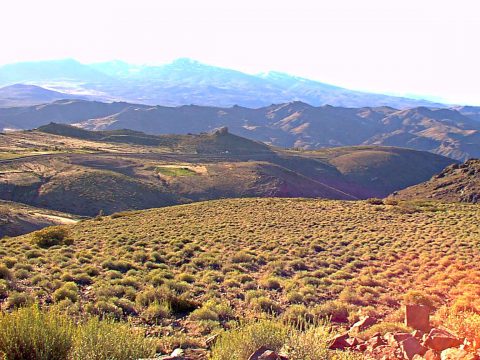
Las Ovejas, a small rural town located on the shore of the La Bodega stream, on the left margin of the Nahueve is 38km away from Andacollo. The origin of its name lays on the fact that the farmhands knew this place as “Sheep Pampas” since it was a privileged spot for sheltering and breeding sheep. Nowadays this place constitutes a little supply center for tourists. There is an area for camping and a “Culture house and Tourist information center” where you can get information on non-traditional tours (by horse or on foot) as well as for fishing in the surrounding rivers and streams. Among these excursions there is the visit to the Colo Michi Có to admire the petroglyphs and Northern Patagonia’s most significant rock art. They are within caves or “chenques”. The only way to get to them is by horse and this trip will take approximately three hours.
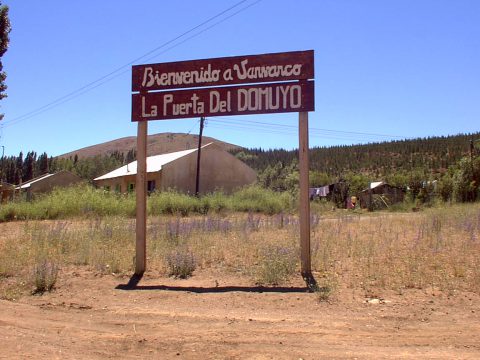
Continuing through this road you will arrive in Varvarco where there is the confluence of the Neuquén and Varvarco rivers. Here you will get a spectacular sight from the heights. The two water courses can be clearly seen, Neuquéns’ flows downwards quickly and it has crystal-clear waters, and the Varvarco has brownish waters. During a stretch they do not seem to want to mix and they form a single river but with two different stripes until the brownish color of the Varvarco river wins over, near the bridge and the Neuquén river continues with the color we have seen downstream.
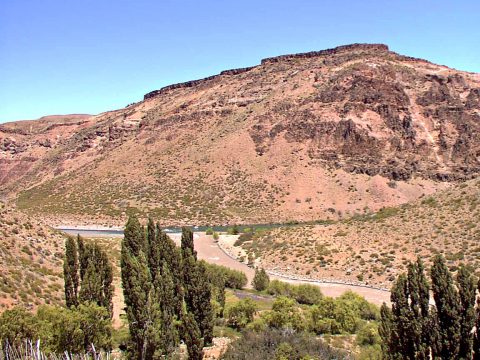
On the left, before reaching Varvarco, there is route no. 54 that leads to the Varvarco Campo and Varvarco Tapia Lagoons that are excellent places for trout fishing.
Varvarco is land of history, mystery and legends. This state used to be the place of a great estancia of a rich Chilean landlord, Méndez Urrejola, who organized a primitive colony called “Malbarco”. The country people still call it that way. Said name means “yard of bitter water”, in reference to the thermal waters (acid, sulfurous). Many legends surround the history of Varvarco maybe because of the nearness of the boiling waters of the Domuyo, or because of the strange figures time has carved on the rocks or because of the hills that surround it, or the mystery of the rock art symbols of the Colo Michi Có, or because of all the mentioned before together.. the enchanted small lagoon, the girl of the gold comb, the Inca’s subterranean city…
The town also has a very well-kept camping place, the parcels have trees and there are also huts. There is an office of tourist information as well.
The remaining road when you continue through route no. 43 is filled with drainage channels, slopes, curves and zigzags, narrow bridges and precipices, sometimes on both sides of the road. El Cajón del Atreuco will amaze you with its depth and the rare rock formations that surround it.
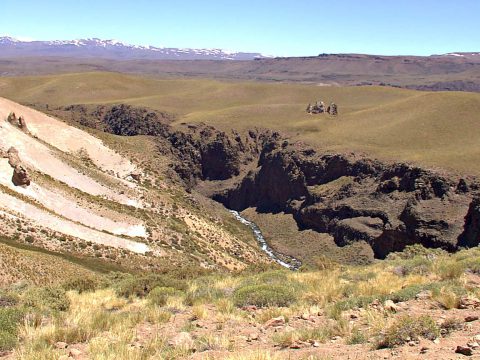
On the last part of the tour, you will arrive in Aguas Calientes and in the thermal site on the open called “Área Natural Protegida Sistema Domuyo” by crossing the stream of the same name.
The feeling is strange, one feels as in top of the world with an extremely clean sky and surrounded by little water streams of boiling water, waterfalls, fountains, pools, with colorful algae that resist high temperatures and that are said to be good for the treatment of arthritis and skin problems.
In another sector, known as Las Olletas, there are geysers, water steam emanations of extremely high temperatures and that can be of up to 1 meter high.
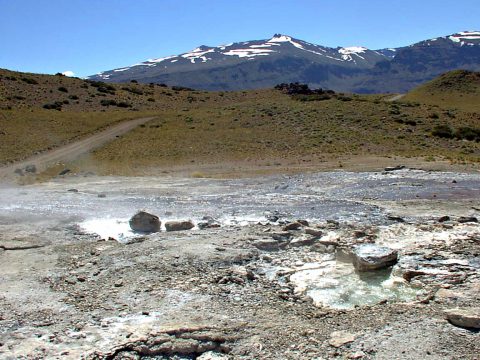
It is a whole thermal system, that has been currently exploited only on the area of Villa Aguas Calientes. In order to access the remaining places, El Humazo, Los Tachos, La Olleta Bramadora and others, it is necessary to have a local guide so as to go there by horse or on foot. There are huts, grills, and a place for camping in the Villa.























